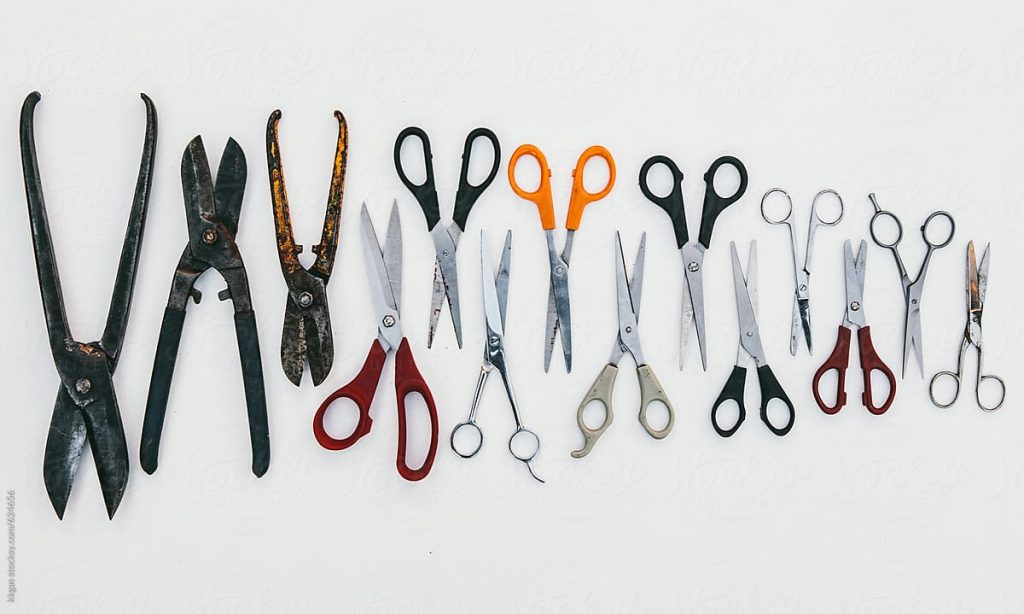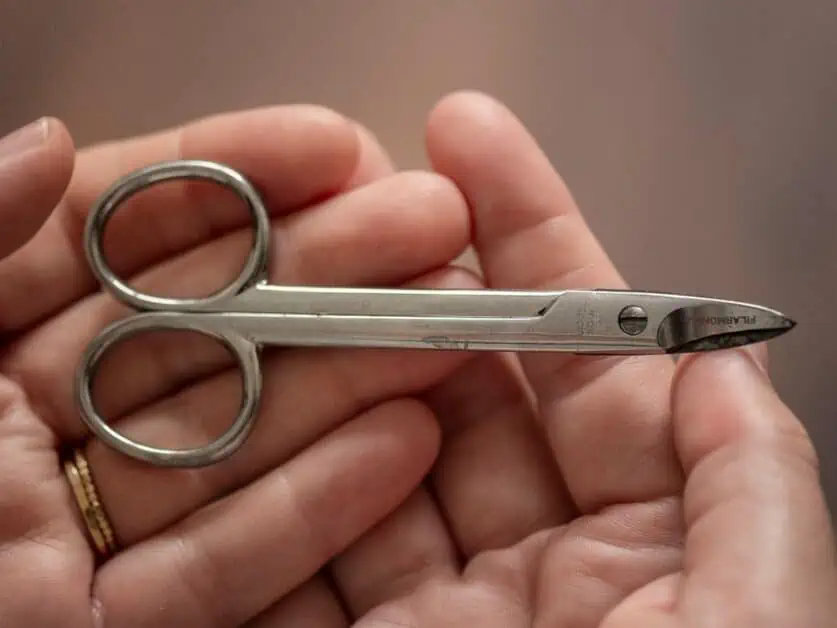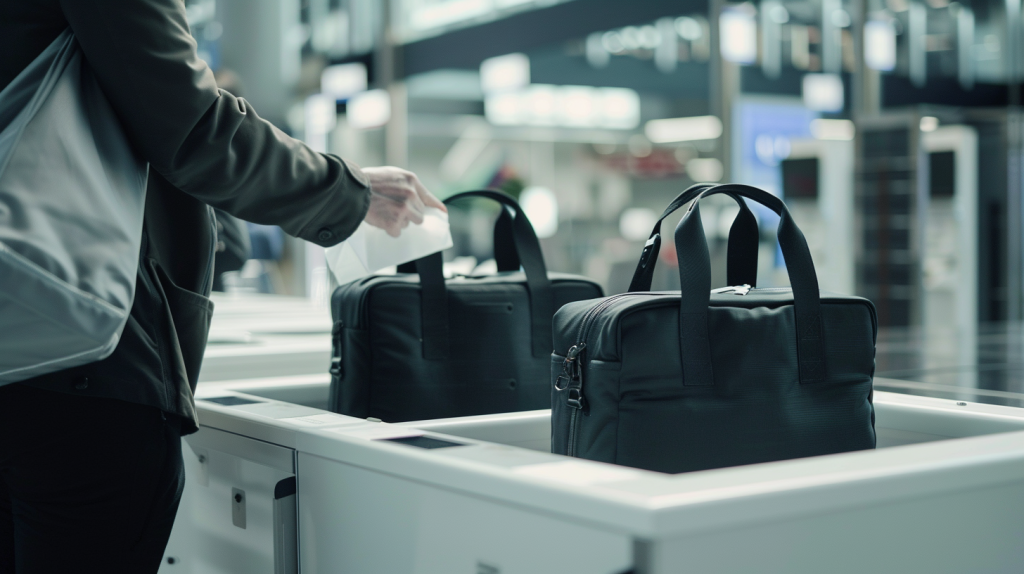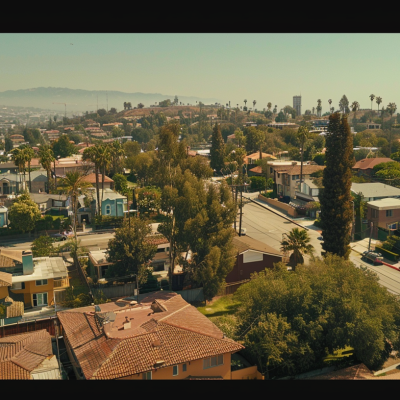Knowing what you can and can’t bring in your carry-on and checked luggage is crucial when packing for a flight.
Scissors are often confused since they come in various sizes and styles.
In this blog post, we promise to clear any uncertainty by providing essential guidelines for packing scissors in your checked bags.
We’ll cover the specific rules and restrictions set by different aviation authorities worldwide, including the TSA, UK Government, EU, and more.
You’ll also learn helpful tips for safely packing your scissors to avoid security issues and potential damage to your belongings.
By the end of this article, you’ll clearly understand how to pack your scissors for your next flight confidently.
Practical Packing Tips: How to Pack Scissors Safely

To guarantee the safe and secure packing of your scissors, consider implementing the following methods
1. Utilize the Original Retail Packaging
Store your scissors in their original packaging whenever possible, which often provides the most effective protection during travel.
2. Wrap the Blades in Bubble Wrap
Carefully wrapping the scissor blades in bubble wrap helps prevent them from causing damage to your luggage or inflicting injury on others.
3. Roll Them in a Small Towel
Another option is to place your scissors in the center of a small towel and roll it up securely, providing additional padding and protection.
These packing techniques can achieve two essential objectives
Safeguarding your scissors from potential damage during transit and minimizing the risk of baggage handlers and security inspectors sustaining injuries from exposed sharp blades or tips.
Taking these precautions ensures that your scissors arrive at your destination in the same condition as when you packed them, ready for use upon arrival.
Different Types of Scissors

Scissors come in various types and designs, each tailored to serve specific purposes and applications.
Some of the most common types of scissors include:
1. Grooming Scissors
This category encompasses scissors used for personal grooming tasks, such as cutting hair, trimming mustaches, or clipping nails.
2. Food Scissors
It is designed specifically for use in the kitchen, these scissors are commonly used for tasks like cutting herbs, snipping open packages, or portioning meat.
3. Medical Scissors
Healthcare professionals rely on various types of medical scissors, each designed for specific procedures and tasks within the medical field.
4. Ceremonial Scissors
These large, decorative scissors are primarily used for ceremonial purposes, such as ribbon-cutting events or other special occasions.
5. Sewing and Crafting Scissors
This is designed for precision cutting, these scissors are essential for individuals engaged in sewing, quilting, and various crafting projects involving fabric, paper, or other materials.
Packing Recommendations for Scissors

When packing scissors for air travel, it is crucial to consider factors such as the blade length and tip style to determine the most appropriate and secure method of transportation.
One highly recommended approach is to utilize a hard case or the original packaging provided by the manufacturer whenever possible.
This not only ensures optimal protection for your scissors during transit but also helps prevent them from puncturing your luggage or causing injury to yourself or others.
As you decide how to pack your scissors, always refer to specific guidelines and regulations about blade length and tip specifications to ensure airline and security requirements compliance.
What to Do If Scissors are Flagged at Security Check

Prepare for possible scenarios if your scissors are flagged during the security screening process:
1. Maintaining Composure
It is essential to maintain a calm and cooperative demeanor when interacting with security staff:
By exhibiting politeness and compliance with their instructions, you can contribute to a smoother screening process and minimize the likelihood of unnecessary delays or complications.
2. Handling Confiscation
Steps to navigate the situation effectively if security decides to confiscate your scissors
- Explain Regulations: Begin by calmly and respectfully explaining your understanding of the regulations about scissors, citing the specific guidelines for blade length and other relevant factors you have researched before your trip.
- Recognize Authority: However, it is crucial to recognize that the security staff ultimately makes the final decision, and they may still choose to confiscate your scissors, regardless of your explanation.
- Inquire About Retrieval: In such cases, it is advisable to inquire about the official process for reclaiming your items after your trip.
3. Alternative Precautions
Consider these precautions to avoid losing valuable or sentimental scissors:
- Avoid Packing Valuable Scissors: It is important to remember that the successful reclamation of confiscated items is not always guaranteed, so it is generally prudent to avoid packing scissors that hold significant sentimental value or are prohibitively expensive to replace.
- Consider Alternative Transportation: If you possess scissors that fall into either of these categories, consider exploring alternative transportation methods, such as shipping them to your destination in advance, to minimize the risk of permanent loss.
3.1 Airline-Specific Policies
Always check with your airline for any specific policies regarding the transportation of scissors.
- Contact Your Airline: To further ensure compliance and minimize the risk of complications, it is always a good idea to contact your airline directly, either through their official website or by contacting their customer service department, to obtain clarification on their unique requirements and restrictions.
- Provide Details: When inquiring about airline-specific policies, provide as much detail as possible about the type of scissors you intend to pack, including the blade length, tip style, and other relevant features.
- Follow Airline Requirements: Suppose your airline’s policies differ from the general guidelines outlined in this article.
In that case, adhering to the airline’s specific requirements is essential to avoid any potential issues during the security screening process or while boarding your flight.
3.2 Staying Informed
Keep up to date with any changes or updates to scissor regulations.
- Regular Updates: Aviation security guidelines are subject to periodic revisions based on emerging threats, technological advancements, and other factors contributing to air travel’s safety and security.
- Check Official Sources: To stay informed about the latest developments and ensure ongoing compliance, regularly check the official websites of relevant aviation authorities and your chosen airline for any updates or modifications to their scissor policies.
Countrywise Restrictions for Packing Scissors and Other Sharp Objects

| Region | Maximum Blade Length | Carry-On Allowed? | Checked Baggage |
|---|---|---|---|
| America (TSA) | 4 inches | Yes | Yes |
| Europe (EU) | 6 cm | No | Yes |
| United Kingdom | 6 cm | Yes | Yes |
| Australia & New Zealand | No specific limit | No | Yes |
| Canada | 6 cm | Yes | Yes |
| Rest of the World | Varies | Consult Airline | Consult Airline |
When preparing for air travel, it is crucial to understand the restrictions and guidelines surrounding packing sharp objects, such as scissors, in both your carry-on and checked luggage.
Although scissors are generally not permitted in carry-on bags, they may be allowed in checked luggage depending on specific conditions and criteria.
To ensure a smooth and stress-free travel experience
It is highly recommended that you thoroughly review the specific policies outlined by your chosen airline and any relevant international regulations before packing your bags.
These rules and guidelines vary significantly between airlines and countries.
Before your departure, it is imperative to verify the details on the airline’s official website or contact their customer service representatives.
This proactive step can avoid potential inconvenience, delays, or legal issues at the airport security checkpoint.
1. America TSA guidelines
- TSA has established specific policies and restrictions regarding packing scissors for air travel in the United States.
- According to TSA regulations, scissors with blades measuring less than 4 inches (measured from the pivot point) are permitted in carry-on luggage.
- However, scissors with blades exceeding this length must be securely packed in checked baggage.
- When placing scissors in your checked luggage, it is essential to ensure they are properly wrapped or sheathed to minimize the risk of injury to baggage handlers and security inspectors during the screening process.
2. Europe (EU guidelines)
- Under European Union regulations, scissors with blades longer than six centimeters (approximately 2.4 inches) are strictly prohibited in carry-on luggage.
- They must be packed exclusively in checked bags.
- Furthermore, it is necessary to ensure these scissors are adequately secured to mitigate any potential risks associated with their presence in luggage.
- United Kingdom Passengers traveling to or from the United Kingdom can carry scissors with blades measuring up to 6 cm (2.4 inches) in length in their hand luggage.
- Any scissors with blades exceeding this length should be placed in checked baggage to comply with the UK’s aviation security regulations.
3. Australia and New Zealand
- Australia and New Zealand have implemented restrictions on sharp and pointed scissors, emphasizing the blade length as a determining factor.
- Scissors falling under these categories must be packed in checked luggage rather than carried on board the aircraft.
4. Canada
- The Canadian Air Transport Security Authority (CATSA) allows passengers to include scissors with blade lengths of up to 6 cm (2.4 inches) in their carry-on bags.
- However, scissors with longer blades should be securely packed in checked luggage to adhere to CATSA regulations.
Rest of the World It is important to note that regulations regarding the packing of scissors in carry-on and checked luggage can differ significantly across various parts of the world.
Conclusion
Packing scissors for air travel requires careful consideration and adherence to the guidelines set forth by airlines and aviation authorities worldwide.
Understanding the specific regulations regarding blade length, tip style, and packing requirements can ensure a smooth and stress-free journey.
Remember to prioritize safety and security by properly securing your scissors and maintaining a cooperative attitude during the screening process.
With the right preparation and mindset, you can confidently navigate the complexities of traveling with scissors and arrive at your destination ready to embark on your next adventure.
So, the next time you’re packing for a flight, remember these essential guidelines and don’t let the uncertainty surrounding scissors keep you from making the most of your travels.






